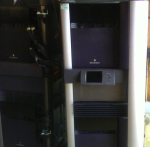LoWeN wrote: Hello,
Hummm "bad".
So what can we take as "base" for that kind of mod.
Any R7K sure?
R5200?
Because I never found any R7K here around only R5K/R10K/R12K and one time in my life I have seen 02+.
Kind regards,
Charles
All you need is writen on page 2.
http://www.nekochan.net/phpBB2/viewtopi ... c&start=15
You need a R5K motherboard with a RM5200 - 300 Mhz Cpu with a specific Cpu board revision.
RM5200 are hard to find, and even if you find it, its price will be very high.


















 <>
<>

